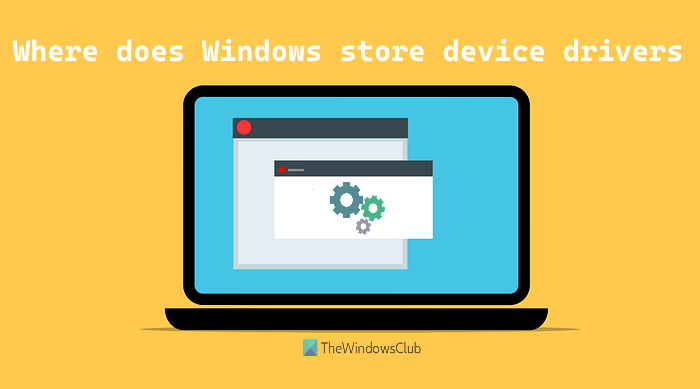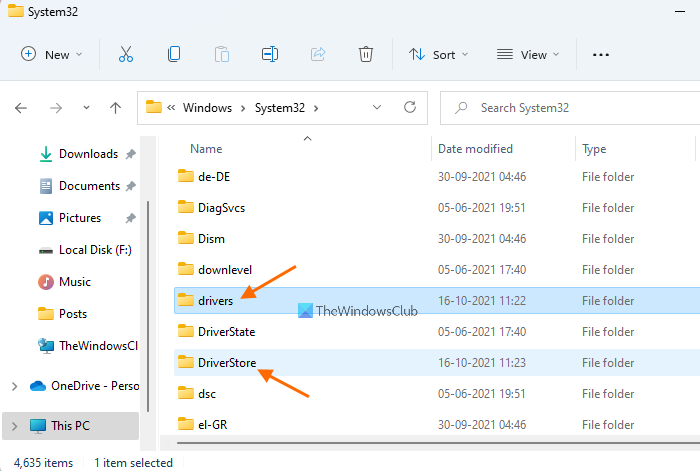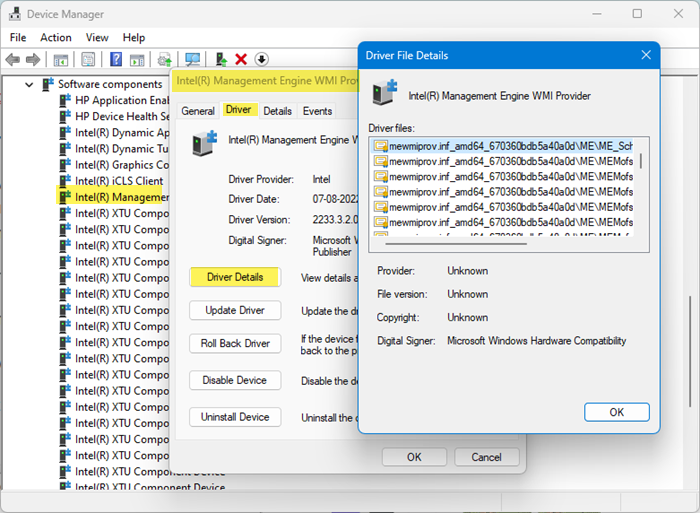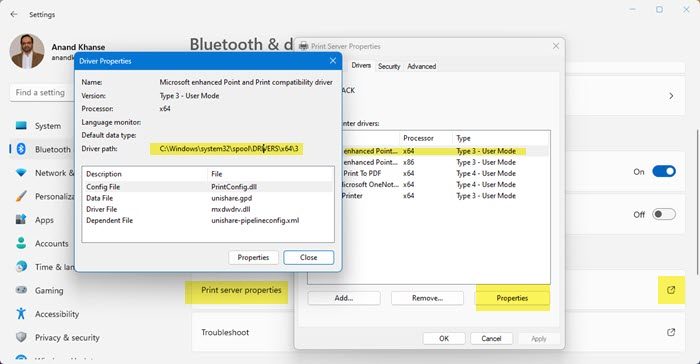You might have wondered where Drivers are stored in Windows 11/10. In this article, we will talk about the Driver folder location. The path to the folders that store device drivers remains the same in Windows 11 or Windows 10.
Device Driver Location in Windows 11/10

All of us use different types of peripherals with our computers. A hardware device that we connect to a computer externally is called a peripheral, like a keyboard, mouse, printer, etc. When you connect a peripheral to your computer for the first time, Windows takes some time to install the drivers compatible with that device.
What is a device driver?
A Device driver (or driver) is software that helps an operating system communicate with connected devices. In other words, device drivers are a set of files that are needed to operate or control hardware devices. Without a device driver, Windows OS is unable to recognize the type of device connected to it, and then you won’t be able to use that particular device. This is the reason why sometimes external devices do not work due to corrupt, wrong, or missing drivers.
Where are Drivers stored in Windows 11/10?
Windows stores all built-in system as well as third-party device drivers in the DriverStore/FileRepository, \spool\DRIVERS\ as well as the drivers folders inside the Windows > System32 folder.

Driver folder location in Windows
When Windows detects new devices, it finds and installs the compatible drivers for those devices. It locates existing drivers from its Store and uses them. If new drivers are installed, it stores their data in one of these two folders. You can access these folders using the following path:
- C:\Windows\System32\drivers
- C:\Windows\System32\DriverStore\FileRepository
- C:\Windows\system32\spool\DRIVERS
While the drivers folder contains SYS (*.sys) files of installed drivers, the DriverStore folder includes a FileRepository sub-folder that contains INF (*.inf) files of those drivers.
- SYS files: SYS are system files of drivers required by Windows OS and these are commonly used to store drivers.
- INF files: On the other hand, an INF file is a text file that contains all the information that is required by Windows to install a device driver. This information file includes the name and the location of a particular driver, the version number of the driver, registry information, etc. That’s why the INF file is crucial for device installation. After opening the FileRepository folder, you will see the list of all drivers (in separate folders) installed on your system. The driver files that this folder contains are in INF format.
Before installing a driver, Windows copies the driver package to the DriverStore folder. This package contains the INF files and other files referred by the INF files. Some users download the device drivers from any website or untrusted sources. Downloading the drivers from untrusted sites can be a security threat because such files may contain a virus or malware. Hence, to protect users’ computers from such attacks, Windows verifies the integrity of the driver package by verifying the digital signatures before copying the driver package to the DriverStore folder.
TIP:
So, now you know where Windows stores device drivers, you can simply access that path and then manually copy driver folders to backup or export them. If you want, you can also use PowerShell to export and backup device drivers.
Apart from that, you can also take the help of the DISM tool to export drivers or backup them using other ways.
Where do I find device drivers?
Windows stores device drivers physically on your hard drive. You will find all your third-party drivers in the DriverStore folder in the INF file format. We have also covered above in this post how you can open the DeviceStore folder.
Read: How to manually install a Driver using a .INF File.
How to view details of the installed Driver files?

To find out what files are used for a specific driver, take the following steps:
- Press Win+X and select Device Manager
- Find the hardware device whose details you want
- Right-click it and select Properties
- Click the Driver tab in the Device Properties box which opens
- Next, click Driver Details button
- In the next box that opens, you can check the files related to that device driver along with the full file path.
Where are printer drivers in Windows?

Printer drivers in Windows 11/10 can be found by opening Settings > Bluetooth & devices > Printers & scanners. Scroll down to Related Settings and click on Print server properties. Next, go to the Drivers tab to check if your printer is listed. Select the driver and then click on Properties. In the Driver Properties box that open, you will see its installation path as well as other details.
Why do devices need device drivers?
A driver is a connecting link between the Windows operating system and the external devices. Drivers help the Windows OS know which device is connected. If a driver is not installed correctly or gets corrupted, you will not be able to use that device.
Read: How to get a list of all Device Drivers?
Where is the Driver tab in Device Manager?
The Driver tab in the Device Manager is helpful to update, rollback, disable and uninstall a device driver. You can use the following steps to open the Driver tab for a particular device:
- Press Win+R keys to launch the Run command box
- Type devmgmt.msc in the text field
- Press the OK button. This will launch the Device Manager
- In the Device Manager, select the driver which you want to update, uninstall, or rollback
- Right-click on the selected driver
- Select Properties option.
- In the Properties window, switch to the Driver tab.
Can you Backup and Restore Drivers in Windows?
Yes, you can Backup and Restore Drivers in Windows 11/10. You can also use PowerShell, DISM, or the built-in Device Manager to manage, backup, and restore your Device Drivers. Another easy way is to use freeware like Driver Fusion, Free Driver Backup, etc., that help you easily backup and restore drivers.